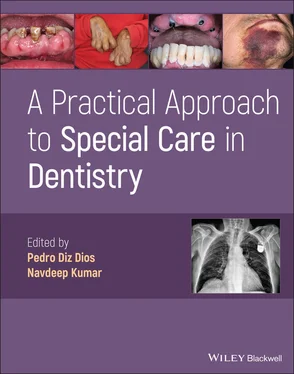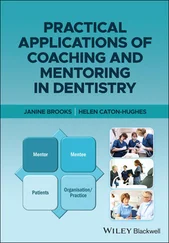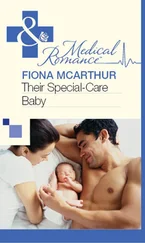A Practical Approach to Special Care in Dentistry
Здесь есть возможность читать онлайн «A Practical Approach to Special Care in Dentistry» — ознакомительный отрывок электронной книги совершенно бесплатно, а после прочтения отрывка купить полную версию. В некоторых случаях можно слушать аудио, скачать через торрент в формате fb2 и присутствует краткое содержание. Жанр: unrecognised, на английском языке. Описание произведения, (предисловие) а так же отзывы посетителей доступны на портале библиотеки ЛибКат.
- Название:A Practical Approach to Special Care in Dentistry
- Автор:
- Жанр:
- Год:неизвестен
- ISBN:нет данных
- Рейтинг книги:3 / 5. Голосов: 1
-
Избранное:Добавить в избранное
- Отзывы:
-
Ваша оценка:
- 60
- 1
- 2
- 3
- 4
- 5
A Practical Approach to Special Care in Dentistry: краткое содержание, описание и аннотация
Предлагаем к чтению аннотацию, описание, краткое содержание или предисловие (зависит от того, что написал сам автор книги «A Practical Approach to Special Care in Dentistry»). Если вы не нашли необходимую информацию о книге — напишите в комментариях, мы постараемся отыскать её.
Learn to treat dental patients with disabilities or who are medically compromised A Practical Approach to Special Care in Dentistry
A Practical Approach to Special Care in Dentistry
A Practical Approach to Special Care in Dentistry — читать онлайн ознакомительный отрывок
Ниже представлен текст книги, разбитый по страницам. Система сохранения места последней прочитанной страницы, позволяет с удобством читать онлайн бесплатно книгу «A Practical Approach to Special Care in Dentistry», без необходимости каждый раз заново искать на чём Вы остановились. Поставьте закладку, и сможете в любой момент перейти на страницу, на которой закончили чтение.
Интервал:
Закладка:
5 What laboratory tests are recommended before undertaking the dental extractions?Full blood countRifampicin can cause leucopenia and thrombocytopeniaIsoniazid is also associated with a risk of thrombocytopenia, anaemia, aplastic anaemia, haemolytic anaemiaHaematological alterations are not uncommon in protein malnutritionLiver function testsIsoniazid can cause toxic hepatitisCoagulation studyCoagulation may be impaired due to hepatic dysfunction caused by antituberculosis drugsRifampicin has also been associated with impaired vitamin K production by oral flora; this reduces the activity of vitamin K‐dependent clotting factors
6 You determine that there is acute infection associated with #27. What do you need to consider when prescribing antibiotics and/or analgesics?Do not prescribe medication that is metabolised by the liverAppropriate medications include:Antibiotics such as penicillin V or amoxicillinAnalgesics: such as metamizole (unavailable in some countries) or paracetamol at low dosages (<2 g/day)
7 When planning for dental extractions, should you delay due to the diagnosis of tuberculosis?The patient has undergone tuberculosis treatment for more than 3 months following reactivation of the infectionHence treatment can proceed but it is prudent to liaise with the patient's physician given the multiple comorbidities
8 The patient asks whether he can have sedation for dental extractions. What precautions are necessary with this patient?Advise that this cannot be provided if recreational drugs are usedConsider the BMI/weight loss of the patientDuring the active phase of tuberculosis, do not use nitrous oxide as this might contaminate the gas flow systemLorazepam has synergistic action with other benzodiazepinesThe concomitant use of rifampicin and diazepam should be avoided
General Dental Considerations
Oral Findings
The most common oral lesion is a chronic ulcer located on the dorsum of the tongue (although it can also appear on the palate, lips, oral mucosa and gums) ( Figure 4.1.2)
Diagnosis is established based on a biopsy of the lesion
Cervical or submandibular tuberculous lymphadenopathyOften caused by nontuberculous mycobacteriaA number of these mycobacteria are multiresistant, particularly among patients with HIV infectionLymphadenopathy can fistulise the skin surface (scrofula) Figure 4.1.2 Primary tuberculosis manifesting as a non‐healing, tender ulcer on the tip of the tongue.Diagnosis is established through cultures and/or polymerase chain reaction (PCR) of the nodule biopsyTreatment usually consists of administering clarithromycin and excising the affected nodules
There have been reported oral findings related to tuberculostatic agents:Rifampicin and rifabutin can stain the saliva redRifampicin can cause lichenoid hypersensitivity lesionsStreptomycin can cause circumoral paraesthesia
Dental Management
The dental treatment plan will be determined primarily by the disease progression and by the presence of comorbidities (e.g. HIV infection) ( Table 4.1.1)
Section II: Background Information and Guidelines
Definition
Tuberculosis is an infectious and transmissible disease caused by Mycobacterium tuberculosis , which is characterised by necrotising granulomatous inflammation that mainly affects the lungs (approximately 85% of cases). It is estimated that tuberculosis infects approximately 10 million individuals worldwide each year, 87% of which are concentrated in only 30 countries (predominantly countries with low economic levels). It is a notifiable disease in many parts of the world, with healthcare staff required to inform their health protection teams of a suspected/confirmed case.
Table 4.1.1 Considerations for dental management.
| Risk assessment | Mycobacteria proliferate in the biofilms of dental unitsAlthough the risk of transmission is low, the transmission of tuberculosis in the dental clinic has been reportedPatients who start antituberculosis therapy are considered to not be infectious at 2 weeks, although negative sputum results might not start for up to 2 monthsPatients who have completed antituberculosis therapy generally have no risk of disease reactivationSide‐effects of tuberculosis medication:Especially in those older than 35 years, drug‐induced hepatitis can increase the tendency to bleedLeucopenia, thrombocytopenia and impaired vitamin K production (increasing bleeding risk) have also been describedA number of comorbidities can affect the delivery of dental treatment (alcoholism, drug addiction, hepatitis and HIV infection) |
| Criteria for referral | Latent tuberculosisThe patient is not infectious and can be treated in the dental clinic using standard infection control precautionsActive tuberculosisStandard precautions are insufficient to prevent bacterial transmissionUrgent dental treatment should be undertaken in a hospital setting with access to the appropriate personal protective equipment and ideally a negative pressure roomNon‐urgent treatment should be postponed for 3 monthsReferral to a specialised clinic or hospital centre is also determined by the patient's general condition (e.g. respiratory distress or concurrent advanced HIV infection) |
| Access/appointment | As routine, healthcare staff within the dental clinic should have tests for tuberculosis and evidence of immunity; this is evidenced by tuberculin skin testing or interferon gamma testing within the last 5 years, and/or checking of a BCG (cacillus Calmette–Guérin) scar by an occupational health professionalIf the patient has active tuberculosis, schedule the appointment for the last session of the day to minimise the risk of cross‐transmission; ensure there is access to filtering face pieces (FFP) – ideally FFP3 as these have the highest level of filtering capacityMinimise the number of staff in contact |
| Consent/capacity | Include any potential risks arising from the drugs used to treat tuberculosis and/or comorbidities |
| Anaesthesia/sedation | Local anaesthesiaNo specific recommendations; this is the method of choice to enable dental treatmentSedationAvoid sedation with nitrous oxide (risk of contamination)Consider the impact of respiratory depressionThe efficacy of diazepam can change in patients who are administered rifampicinAccelerated metabolism and reduced plasma concentrations of benzodiazepines have been notedGeneral anaesthesiaGeneral anaesthesia entails a risk of contamination, and some patients also have pulmonary function impairmentStreptomycin increases the activity of neuromuscular blockers (myasthenic syndrome)Where unavoidable, a plenum‐ventilated operating theatre should be used |
| Dental treatment | BeforeAny patient presenting with symptoms suggestive of active tuberculosis disease should be isolated, instructed to wear a surgical or procedure mask, and referred promptly for medical careFor those patients who require urgent dental treatment/who may be infectious, high‐efficiency particulate air (HEPA) filters, ultraviolet germicidal irradiation (UVGI) lamps and appropriate personal protective equipment should be available (FFP3)DuringThe use of sprays and the generation of aerosols (ultrasonic scaling equipment and high‐speed rotary instruments) should be reducedUse high‐volume suctionUse rubber damsUse facemasks with eye protection and change them if they get moistAfterSterilise the instruments with heat (mycobacteria are resistant to disinfectants)Ventilate the clinic after completing the session (open windows) |
| Drug prescription | Avoid paracetamol or recommend low doses (increased hepatic toxicity by rifampicin and isoniazid)It is prudent to avoid all drugs reliant on hepatic metabolismAvoid aspirin (increases the risk of ototoxicity by streptomycin, amikacin, kanamycin or capreomycin)Avoid clarithromycin and azole derivatives (they interact with rifampicin) |
| Education/prevention | All staff who provide dental care should undergo a Mantoux test when commencing employment, regardless of the setting's risk classification |
Aetiopathogenesis
Интервал:
Закладка:
Похожие книги на «A Practical Approach to Special Care in Dentistry»
Представляем Вашему вниманию похожие книги на «A Practical Approach to Special Care in Dentistry» списком для выбора. Мы отобрали схожую по названию и смыслу литературу в надежде предоставить читателям больше вариантов отыскать новые, интересные, ещё непрочитанные произведения.
Обсуждение, отзывы о книге «A Practical Approach to Special Care in Dentistry» и просто собственные мнения читателей. Оставьте ваши комментарии, напишите, что Вы думаете о произведении, его смысле или главных героях. Укажите что конкретно понравилось, а что нет, и почему Вы так считаете.












